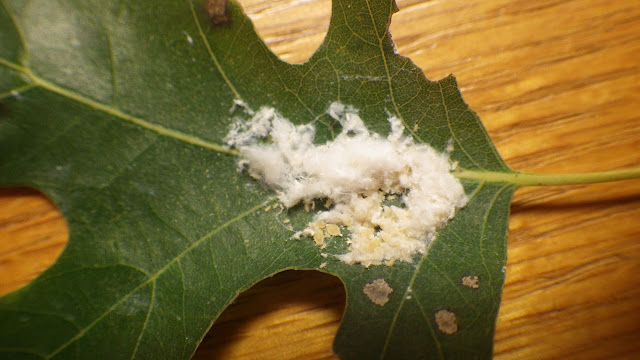The 2016 South Texas Farm and Ranch Show is going on next week on October 19 and 20. If you would like more information, please check out their schedule on the flyer and their website. I am looking forward to attending at least one day. If you're needing CEUs, this is a good opportunity to get them.
My most common insect questions this week have been on the Woolly Oak Aphid. Like other aphids, they feed on the plant sap. This species can practice parthenogenesis, which means that a colony of females can reproduce without the need for any males. They give live birth, and are often capable of reproducing in as little as 4 days. They are native to North America, and excrete the fluffy wax as a defense mechanism against their numerous predators and parasitoids. I used a pen to scrape away some of the wax to show the aphids underneath in the pictures below. Sooty mold will often accompany this insect if the populations are large. The mold grows as a result of the honeydew this insect excretes as a waste product.
Depending on how large your tree is, hosing the tree down can offer some relief from these insects. If the wax is washed away, not only will some of the aphids go with it, but the remaining aphids will be much more susceptible to predation. If the tree is too large to rinse off, or if the infestation is really severe and the tree's appearance is important, using a systemic insecticide with imidacloprid will kill them as well. Most of these tree treatments take a month or so to show any effect, but the protection lasts between 6 months to a year depending on which treatment you choose.



No comments:
Post a Comment